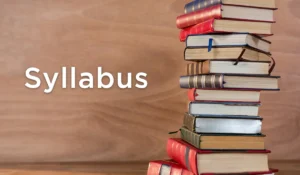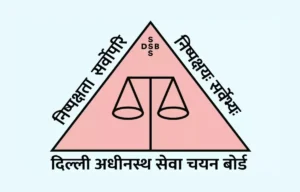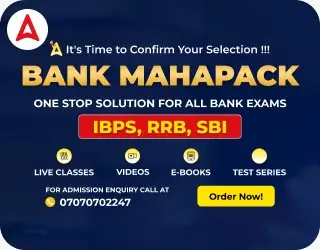On behalf of KVS, the Central Board of Secondary Education (CBSE) is a recruiting body that is responsible for conducting for KVS PRT exam to recruit eligible candidates for 3365 Primary Teacher posts in all Kendriya Vidyalayas across India. Candidates planning to appear for the KVS PRT Exam must go through the KVS PRT Syllabus and Exam Pattern 2025 to ensure perfect preparation and crack the exam. In this article, we have discussed the detailed PRT Syllabus, marking scheme, and other details.
KVS PRT Syllabus and Exam Pattern 2025
Knowing the KVS Primary Teacher Syllabus 2025 provides candidates with a clear roadmap for their preparation. It enables candidates to create a structured study plan, allocating appropriate time to each section based on its weightage in the exam. The KVS Recruitment 2025 exam for PRT posts includes 4 sections for a total of 180 marks.
| KVS Primary Teacher Syllabus 2025- Overview | |
| Organization Name | Kendriya Vidyalaya Sangathan |
| Recruitment Body | Central Board of Secondary Education (CBSE) |
| Recruitment | KVS PRT Recruitment 2025 |
| Post Name | Primary Teacher |
| Vacancies | 3365 |
| Mode of Exam | OMR Based Mode and Descriptive |
| Total Questions | Tier 1 – 100 Tier 2 – 70 |
| Total Marks | Tier 1 – 300 Tier 2 – 100 |
| Exam Duration | Tier 1 – 2 hours Tier 2 – 2.5 hours |
| Marking Scheme | Tier 1 – 3 mark for each correct answer |
| Negative Marking | Tier 1 – 1 mark and Tier 2 (Objective Questions) – 1/4 mark |
| Selection Process | Tier 1, Tier 2, and Interview |
| Official Website | www.cbse.gov.in, www.kvsangathan.nic.in, and www.navodaya.gov.in |
KVS PRT Selection Process 2025
The selection process for KVG TGT shall be a 2 tier exam followed by an Interview. The final merit of candidates will be determined by the marks obtained in Tier-2 and the Interview, with a weightage is 85% and 15% respectively.
| Stage | Details |
| Tier 1 | OMR-based Exam (Qualifying in Nature) |
| Tier 2 | (Objective + Descriptive) (100 marks) |
| Interview | 100 marks |
KVS PRT Exam Pattern 2025 (Revised)
Candidates preparing for the KVS PRT Exam must be aware of the KVS PRT Exam Pattern 2025 to know the topics asked in the exam, the marking scheme, type of qualification. Check the Exam pattern for Tier 1 and 2 from here.
KVS PRT Tier 1 Exam Pattern 2025
- The mode of exam is OMR-based.
- KVS Primary Teacher Tier 1 exam includes a total of 100 MCQ-based questions for 3 marks each.
- There is a negative marking of 1 mark for each incorrect answer.
- The duration of the KVS PRT Exam is 2 hours (120 minutes).
| KVS Tier 1 Exam Pattern 2025 | ||||
| Parts | Subjects | No. of Questions | Total Marks | Duration |
| Part I | General Reasoning | 20 | 60 | 2 Hours (120 minutes) |
| Part II | Numeric Ability | 20 | 60 | |
| Part III | Basic Computer Literacy | 20 | 60 | |
| Part IV | General Knowledge | 20 | 60 | |
| Part V | Language Competency Test (English) | 10 | 30 | |
| Part VI | Language Competency Test (One other Modern Indian Language) | 10 | 30 | |
| Total | 100 | 300 | ||
KVS PRT Tier 2 Exam Pattern 2025
Qualified candidates in the Tier 1 exam will be eligible to appear for the Tier 2 exam. In this stage, questions will be asked of the subjects for which candidates have applied. In OMR-based objective-type questions, 1 mark will be given for each correct answer, and there is negative marking. 1/4 mark will be deducted for a wrong answer.
| KVS Tier 2 Exam Pattern 2025 | |||
| Type | Number of Questions | Marks | Duration |
| Objective | 60 | 60 | 2.5 hours |
| Descriptive | 10 | 40 | |
| Total | 70 | 100 | |
Interview
KVS Primary Teacher (PRT) Interview exam will be held for a total of 100 marks. In Interview exam will is conducted to assess whether a candidate possesses the teaching aptitude, communication skills, personality traits, and values expected from a Kendriya Vidyalaya teacher.
KVS Primary Teacher Syllabus 2025
Go through the detailed and updated KVS Syllabus 2025 for Primary Teachers (PRT) Exam for all parts to understand the level of questions to be asked in the exam.
KVS PRT Syllabus 2025 for Part 1
KVS Primary Teacher Part 1 consists of questions from General English and General Hindi. The detailed KVS PRT syllabus for Part 1 has been updated here.
KVS PRT Syllabus for General English
Go through the topics to be covered under General English section as listed below:
- Articles
- Narrations
- Prepositions
- Punctuations
- Comprehension
- Fill in the Blanks
- Adverb
- Error Correction
- Sentence Rearrangement
- Unseen Passages
- Vocabulary
- Antonyms
- Synonyms
- Idioms
- Verb
- Tenses
- Adjective
- Modal
- Voice
- Subject-Verb Agreement
KVS PRT Syllabus for General Hindi
The topics to be covered in General Hindi section are as ffollows:
- भाषा
- संज्ञा
- सर्वनाम
- विशेषण
- क्रिया
- अव्यय
- वचन
- लिंग
- उपसर्ग एवं प्रत्यय
- वाक्य निर्माण
- पर्यायवाची
- विपरीपार्थक
- अनेकार्थक
- समानार्थी शब्द
- विराम चिन्हों की पहचान एवं उपयोग
- मुहावरे एवं लोकोक्तियाँ
- अलंकार
- सन्धि
- तत्सम
- तद्भव
- देशज एवं विदेशी शब्द
- समास
KVS PRT Syllabus 2025 for Part 2
KVS Primary Teacher Part 2 consists of questions from General Knowledge & Current Affairs, Reasoning Ability, Computer Literacy, Pedagogy, and related subjects. The detailed KVS PRT syllabus for Part 2 has been updated here.
| KVS PRT Paper 2 Syllabus 2025 | |
| Subjects | Topics |
| General Knowledge and Current Affairs |
|
| Reasoning Ability |
|
| Computer Literacy |
|
KVS PRT Syllabus 2025 for Part 3
(a) Understanding the Learner
• Concepts growth, maturation and development, principles and debates of development, development tasks and challenges
• Domains of Development: Physical, Cognitive, Socio-emotional, Moral etc., deviations in development and its implications.
• Understanding Adolescence: Needs, challenges and implications for designing institutional support.
• Role of Primary and Secondary Socialization agencies. Ensuring Home school continuity.
(b) Understanding Teaching Learning
• Theoretical perspectives on Learning -Behaviorism, Cognitivism and Constructivism with
special reference to their implications for:
• The role of teacher
• The role of learner
• Nature of teacher-student relationship
• Choice of teaching methods
• Classroom environment
• Understanding of discipline, power etc.
• Factors affecting learning and their implications for:
• Designing classroom instructions,
• Planning student activities and,
• Creating learning spaces in school.
• Planning and Organization of Teaching-Learning
• Concept of Syllabus and Curriculum, Overt and Hidden Curriculum
• Foundational Literacy and Numeracy, Early Childhood Care and Education
• Competency-based Education, Experiential learning, etc.
• Instructional Plans: -Year Plan, Unit Plan, Lesson Plan
• Instructional material and resources
• Information and Communication Technology(ICT) for teaching-learning
• Assessment of learning, for learning and as learning: Meaning, purpose and considerations in planning each.
• Enhancing Teaching Learning processes: Classroom Observation and Feedback, Reflections and Dialogues as a means of constructivist teaching
c) Creating Conducive Learning Environment
• The concepts of Diversity, disability and Inclusion, implications of disability as social construct, types of disabilities-their identification and interventions
• Concept of School Mental Health, addressing the curative, preventive and promotive dimensions of mental health for all students and staff. Provisioning for guidance and counselling. Developing School and community as a learning resource.
(d) School Organization and Leadership
• Leader as a reflective practitioner, team builder, initiator, coach and mentor.
• Perspectives on School Leadership: instructional, distributed and transformative
• Vision building, goal setting and creating a School Development Plan
• Using School Processes and forums for strengthening teaching learning-Annual Calendar, time-tabling, parent-teacher forums, school assembly, teacher development forums , using achievement data for improving teaching-learning, School Self Assessment and Improvement
• Creating partnerships with community, industry and other neighbouring schools and Higher Education Institutes — forming learning communities
(e) Perspectives in Education
• Role of school in achieving aims of education.
• NEP-2020: Early Childhood Care and Education: The Foundation of Learning ; Foundational Literacy and Numeracy; Curriculum and Pedagogy in Schools: Holistic & Integrated Learning; Equitable and Inclusive Education: Learning for All; Competency based learning and Education.
• Guiding Principles for Child Rights, Protecting and provisioning for rights of children to safe and secure school environment, Right of Children to free and Compulsory Education Act, 2009, Historically studying the National Policies in education with special reference to school education;
• School Curriculum Principles: Perspective, Learning and Knowledge, Curricular Areas, School Stages — Pedagogy & Assessment.
KVS PRT Syllabus for Concerned Subjects (Part 4)
The concerned subjects included in the KVS PRT Syllabus are as follows-
- Chemistry
- Economics
- English
- Physics
- Maths
- History
- Geography
- Biology
- Commerce and Computer Science
- Hindi
KVS PRT Syllabus for General Science
The living world, The universe, Matter, Motion, Food, Plant and animals, Force and motion, atoms, gases, energy, acceleration, Our Country, Our environment, Natural resources
KVS PRT Syllabus for Maths
Number System, LCM & HCF, Geometry, Mensuration, Profit & Loss, average, percentage, Ratio and Proportion, Speed, distance and time, CI & ST, linear equation, Shapes & Measures, Size, etc.
KVS PRT Syllabus for Environmental Science
Democracy, Panchayat, Population Growth, Disease, Natural Calamities, Air, water, Soil, Resources, development, Map of India, Nation Freedom Movement, culture, Five Year Plans, Transportation, Communication, etc.




 OSSC CGL Syllabus 2025 and Exam Pattern,...
OSSC CGL Syllabus 2025 and Exam Pattern,...
 HP Patwari Syllabus and Exam Pattern 202...
HP Patwari Syllabus and Exam Pattern 202...
 DSSSB MTS Syllabus 2025 and Exam Pattern...
DSSSB MTS Syllabus 2025 and Exam Pattern...






